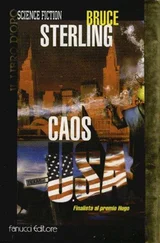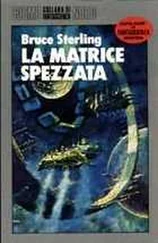Bruce Sterling - Essays. FSF Columns
Здесь есть возможность читать онлайн «Bruce Sterling - Essays. FSF Columns» весь текст электронной книги совершенно бесплатно (целиком полную версию без сокращений). В некоторых случаях можно слушать аудио, скачать через торрент в формате fb2 и присутствует краткое содержание. Жанр: Фантастика и фэнтези, на английском языке. Описание произведения, (предисловие) а так же отзывы посетителей доступны на портале библиотеки ЛибКат.
- Название:Essays. FSF Columns
- Автор:
- Жанр:
- Год:неизвестен
- ISBN:нет данных
- Рейтинг книги:3 / 5. Голосов: 1
-
Избранное:Добавить в избранное
- Отзывы:
-
Ваша оценка:
- 60
- 1
- 2
- 3
- 4
- 5
Essays. FSF Columns: краткое содержание, описание и аннотация
Предлагаем к чтению аннотацию, описание, краткое содержание или предисловие (зависит от того, что написал сам автор книги «Essays. FSF Columns»). Если вы не нашли необходимую информацию о книге — напишите в комментариях, мы постараемся отыскать её.
Essays. FSF Columns — читать онлайн бесплатно полную книгу (весь текст) целиком
Ниже представлен текст книги, разбитый по страницам. Система сохранения места последней прочитанной страницы, позволяет с удобством читать онлайн бесплатно книгу «Essays. FSF Columns», без необходимости каждый раз заново искать на чём Вы остановились. Поставьте закладку, и сможете в любой момент перейти на страницу, на которой закончили чтение.
Интервал:
Закладка:
It certainly seemed like a grand idea at the time, the time being 1982, one of the break-the-bank years of the early Reagan Administration.
The Europeans at CERN, possessors of the world's largest particle accelerator, were planning to pave their massive Swiss tunnel with new, superconducting magnets. This would kick the European atom-smasher, already powerful, up to a massive 10 trillion electron volts.
In raw power, this would boost the Europeans decisively past their American rivals. America's most potent accelerator in 1982, Fermilab in Illinois, could manage a meager 2 TeV. And Fermilab's Tevatron, though upgraded several times, was an aging installation.
A more sophisticated machine, ISABELLE at Brookhaven National Laboratory in New York, had been planned in 1979 as Fermilab's successor at the forefront of American particle physics. But by 1982, it was clear that ISABELLE's ultra-sophisticated superconducting magnets had severe design troubles. The state-of-the-art bungling at Brookhaven was becoming an open embarrassment to the American particle-physics community. And even if the young ISABELLE facility overcame those problems and got their magnets to run, ISABELLE was intended to sacrifice raw power for sophistication; at best, ISABELLE would yield a feeble .8 TeV.
In August 1982, Leon Lederman, then director of Fermilab, made a bold and visionary proposal. In a conference talk to high-energy physicists gathered in Colorado, Lederman proposed cancelling both ISABELLE and the latest Fermilab upgrade, in pursuit of a gigantic American particle accelerator that would utterly dwarf the best the Europeans had to offer, now or in the foreseeable future. He called it "The Machine in the Desert."
The "Desertron" (as Lederman first called it) would be the largest single scientific instrument in the world, employing a staff of more than two thousand people, plus students, teachers and various properly awestruck visiting scholars from overseas. It would be 20 times more powerful than Fermilab, and full sixty times more powerful than CERN circa 1982. The accelerator's 54 miles of deep tunnels, lined with hard- vacuum beamguides and helium- refrigerated giant magnets, would be fully the size of the Washington Beltway.
The cost: perhaps 3 billion dollars. It was thought that the cash- flush Japanese, who had been very envious of CERN for some time, would be willing to help the Americans in exchange for favored status at the complex.
The goal of the Desertron, or at least its target of choice, would be the Higgs scalar boson, a hypothetical subatomic entity theoretically responsible for the fact that other elementary particles have mass. The Higgs played a prominent part at the speculative edges of quantum theory's so-called "Standard Model," but its true nature and real properties were very much in doubt.
The Higgs boson would be a glittering prize indeed, though not so glittering as the gigantic lab itself. After a year of intense debate within the American high- energy-physics community, Lederman's argument won out.
His reasoning was firmly in the tradition of 20th- century particle physics. There seemed little question that massive power and scale of the Desertron was the necessary next step for real progress in the field.
At the beginning of the 20th century, Ernest Rutherford (who coined the memorable catch-phrase, "All science is either physics or stamp-collecting") discovered the nucleus of the atom with a mere five million electron volts. Rutherford's lab equipment not much more sophisticated than string and sealing-wax. To get directly at neutrons and protons, however, took much more energy -- a billion electron volts and a cyclotron. To get quark effects, some decades later, required ten billion volts and a synchrotron. To make quarks really stand up and dance in their full quantum oddity, required a hundred billion electron volts and a machine that was miles across. And to get at the Higgs boson would need at least ten trillion eV, and given that the fantastically powerful collision would be a very messy affair, a full forty trillion -- two particle beams of twenty TeV each, colliding head-on -- was a much safer bet.
Throughout the century, then, every major new advance in particle studies had required massive new infusions of power. A machine for the 1990s, the end result of decades of development, would require truly titanic amounts of juice. The physics community had hesitated at this step, and had settled for years at niggling around in the low trillions of electron volts. But the field of sub-atomic studies was looking increasingly mined-out, and the quantum Standard Model had not had a good paradigm- shattering kick in the pants in some time. From the perspective of the particle physicist, the Desertron, despite its necessarily colossal scale, made perfect scientific sense.
The Department of Energy, the bureaucratic descendant of the Atomic Energy Commission and the traditional federal patron of high-energy physics, had more or less recovered from its last major money-wasting debacle, the Carter Administration's synthetic fuels program. Under new leadership, the DoE was sympathetic to an ambitious project with some workable and sellable rationale.
Lederman's tentative scheme was developed, over three years, in great detail, by an expert central design group of federally-sponsored physicists and engineers from Lawrence Berkeley labs, Brookhaven and Fermilab. The "Desertron" was officially renamed the "Superconducting Super Collider." In 1986 the program proposal was carried to Ronald Reagan, then in his second term. While Reagan's cabinet seemed equally split on the merits of the SSC versus a much more modest research program, the Gipper decided the issue with one of his favorite football metaphors: "Throw deep."
Reagan's SSC was a deep throw indeed. The collider ring of Fermilab in Illinois was visible from space, and the grounds of Fermilab were big enough to boast their own herd of captive buffalo. But the ring of the mighty Super Collider made Fermilab's circumference look like a nickel on a dinner plate. One small section of the Super Collider, the High Energy Booster, was the size of Fermilab all by itself, but this Booster was only a humble injection device for the Super Collider.
The real action was to be in the fifty-four-mile, 14- ft-diameter Super Collider ring.
As if this titanic underground circus were not enough, the SSC also boasted two underground halls each over 300 feet long, to be stuffed with ultrasophisticated particle detectors so huge as to make their hard-helmeted minders resemble toy dolls. Along with the fifty-four miles of Collider were sixteen more miles of injection devices: the Linear Accelerator, the modest Low Energy Booster, the large Medium Energy Booster, the monster High Energy Booster, the Boosters acting like a set of gears to drive particles into ever-more frenzied states of relativistic overdrive, before their release into the ferocious grip of the main Super Collider ring.
Along the curves and arcs of these wheels-within- wheels, and along the Super Collider ring itself, were more than forty vertical access shafts, some of them two hundred feet deep. Up on the surface, twelve separate refrigeration plants would pipe tons of ultra-frigid liquid helium to more than ten thousand superconducting magnets, buried deep within the earth. All by itself, the SSC would more than double the amount of helium refrigeration taking place in the entire planet.
The site would have miles of new-paved roads, vast cooling ponds of fresh water, brand-new electrical utilities. Massive new office complexes were to be built for support and research, including two separate East and West campuses at opposite ends of the Collider, and two offsite research labs. With thousands of computers: personal computers, CAD workstations, network servers, routers, massively parallel supercomputing simulators. Office and laboratory networking including Internet and videoconferencing. Assembly buildings, tank farms, archives, libraries, security offices, cafeterias. The works.
Читать дальшеИнтервал:
Закладка:
Похожие книги на «Essays. FSF Columns»
Представляем Вашему вниманию похожие книги на «Essays. FSF Columns» списком для выбора. Мы отобрали схожую по названию и смыслу литературу в надежде предоставить читателям больше вариантов отыскать новые, интересные, ещё непрочитанные произведения.
Обсуждение, отзывы о книге «Essays. FSF Columns» и просто собственные мнения читателей. Оставьте ваши комментарии, напишите, что Вы думаете о произведении, его смысле или главных героях. Укажите что конкретно понравилось, а что нет, и почему Вы так считаете.



